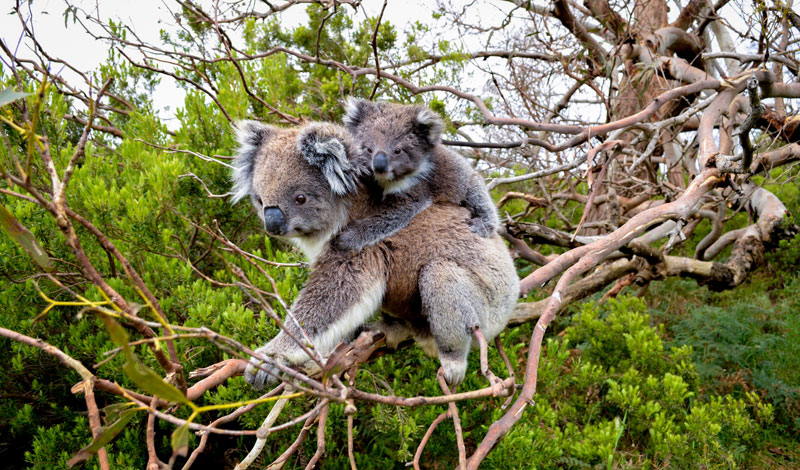
14th February 2022
Koalas are now endangered
The Australian government has changed the conservation status of the koala from vulnerable to endangered, due to its rapidly shrinking habitats and climate change.

Koalas are a national icon of Australia. They are well known worldwide – featured in advertisements, cartoons, games, and as soft toys – and are a major draw for the country’s tourism industry. Surveys have shown that about 75% of European and Japanese tourists place the koala at the top of their list of animals to see. Factors that contribute to the koala’s enduring popularity include its childlike body proportions and teddy bear-like face.
However, the koala is now facing an uncertain future. Its numbers have plunged, due to a variety of mounting threats from human activity. Loss of habitat is among the biggest factors, caused by the expansion of agriculture, housing, mining, roads, and other infrastructure; but is also the result of increasingly dire impacts of climate change and recent megafires that have devastated vast areas of forest. Hundreds are being killed each year by traffic, domestic pets such as dogs and cats, and garden pesticides getting into waterways. Chlamydia, a sexually transmitted disease, has also been spreading among the animals and causing blindness, pneumonia, infertility, and death.
When the koala fur trade began during the late 19th century, as many as 10 million koalas are thought to have existed in Australia. Since then, they have declined to a fraction of their historic range and numbers. Between 2000 and 2016, the states of Queensland and New South Wales bulldozed at least 885,000 hectares of forest and bushland that provided habitat for koalas, based on analyses of vegetation loss derived from satellite imagery.
Having previously classified the animal as “Least Concern” on its Red List, the International Union for Conservation of Nature (IUCN) uplisted the koala to “Vulnerable” in 2016. A report by the WWF in 2017 found a 53% decline per generation in Queensland and a 26% decline in New South Wales.
Estimates of their exact numbers vary considerably, but the Australian government has just published a new detailed analysis, showing the rapid and ongoing decline of koala populations in Eastern Australia. Following the disastrous wildfires of 2019–2020, they have now dipped below 100,000 to approximately 92,000 and are projected to fall by another third in this region during the next decade, possibly reaching 63,000 by 2032.

The significant and immediate threats facing koalas have been recognised by Australia’s environment minister, who has uplisted the status of the iconic animal from Vulnerable to Endangered.
The decision follows a joint nomination by the International Fund for Animal Welfare (IFAW), Humane Society International (HSI) and WWF-Australia in April 2020 to Australia’s Threatened Species Scientific Committee. Koalas in Queensland, New South Wales and the Australian Capital Territory will now be classed as Endangered under national legislation and will gain elevated protections. This decision also recognises that the koala is one step further on the path to extinction, which may occur by mid-century, unless conservation efforts are stepped up.
“Koalas are an international and national icon, but they were living on a knife edge before the Black Summer bushfires with numbers in severe decline due to land-clearing, drought, disease, car strikes and dog attacks. The bushfires were the final straw, hitting at the heart of already struggling koala populations and critical habitat,” said Rebecca Keeble, Oceania Regional Director for the International Fund for Animal Welfare (IFAW).
“This decision is a double-edged sword. We should never have allowed things to get to the point where we are at risk of losing a national icon. It is a dark day for our nation. If we can’t protect an iconic species endemic to Australia, what chance do lesser known but no less important species have?
“This must be a wake-up call to Australia and the government to move much faster to protect critical habitat from development and land-clearing and seriously address the impacts of climate change.”
—
• Follow us on Facebook
• Follow us on Instagram
• Join us on Reddit
• Follow us on Twitter
• Subscribe to us on YouTube
Comments »